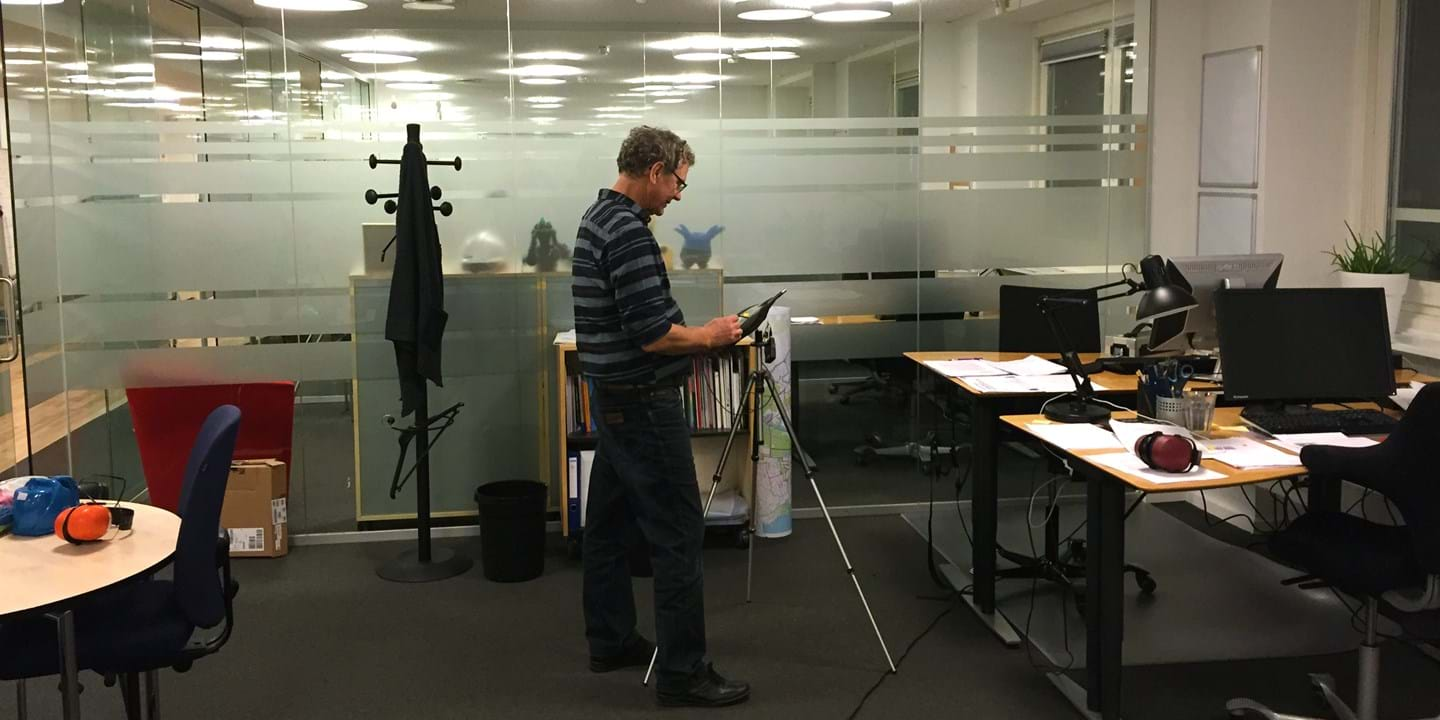
Ocho consejos para la prevención del ruido
"Las oficinas grandes y abiertas en muchos lugares han sido un desastre desde la perspectiva del ruido".
Per Møberg Nielsen, el nestor danés dentro de la prevención del ruido, no se anda con rodeos en sus palabras sobre las oficinas diáfanas. “Los problemas de ruido que observamos ahora a menudo se originan en el propósito de ahorrar dinero; para meter más gente en menos metros cuadrados ”, dice. Aún así, tiene esperanzas. "Noto una creciente conciencia sobre el ruido en las oficinas".
 Per Møberg has more than one string to his bow. He started off as an electro mechanic, proceeded to a medical engineer and moved further on to a Master of Science in Technological and Socio-Economic Planning. This took him to the aviation industry, where he switched focus to acoustics. For 17 years he was responsible for noise control at Scandinavian Airlines, SAS.
Per Møberg has more than one string to his bow. He started off as an electro mechanic, proceeded to a medical engineer and moved further on to a Master of Science in Technological and Socio-Economic Planning. This took him to the aviation industry, where he switched focus to acoustics. For 17 years he was responsible for noise control at Scandinavian Airlines, SAS.
“I was employed to reduce the staff’s noise exposure at Copenhagen Airport where many employees got noise-induced hearing loss. When we were done, we had drastically reduced the number of injuries.”
After a while, Per got a widened range of tasks, including building a new airport kitchen with a highly noise controlled working environment.
All-time high office guideline
In 2000, Per Møberg Nielsen started his own business as consultant.
“I got involved in different research projects, not least on schools and kindergartens. These projects have been very successful. The Copenhagen Municipality now budget for noise control every year in their existing schools and kindergartens.”
He also got engaged in international standardisation work in different ISO working groups. Here he immersed himself in measurement of noise exposure, within the development of ISO 9612 – Determination of occupational noise exposure.
“I have actually made countless measurements of noise exposure”, he states.

As a consultant, Per was also hired to write several guidelines for the industry and different organisations. The most spread, used and well-known of these guidelines is the one about noise in offices.
“To be honest, that is my all-time high”, he laughs. “That is the best of all guidelines I have written.”
Successful noise control
After he left Scandinavian Airlines, he has strived to work half of his time with overall noise issues such as research, guidelines and standardisation work and the other half with noise control in the workplace.
When he looks back at his career, he notes that it has been years when tremendously much and important work has been done to prevent hearing damages within the occupational health.
“Noise control to prevent hearing loss was successful for many years. But 10-15 years ago, the focus shifted away from traditional noise control to reduce noise induced hearing loss and to annoying and disturbing noise.”
Today, projects within offices, schools and kindergartens are dominating his work.
Los empleadores han aprendido de la manera difícil. Aún así, a muchos equipos de gestión realmente no les importa. No entiendo por qué, ya que reduce la productividad.
Squeezing in people
Before the era of open plan offices, there was a long period with private offices dominating the office design.
“Then many employers wanted to save money by squeezing in people in big, open landscapes. There were too many workplaces not established according to the work, the culture and the people in place. People just did it, without thinking so much about the disturbances and consequences for the work environment and, by extension, productivity. Now we see these consequences.”
However, Per sees a changed attitude towards a greater awareness of noise problems in offices.
“Employers have learned the hard way. Still, too many management teams don’t really care about it. I don’t understand why, as it reduces productivity.”
Donde fui contratado como consultor, casi sin excepción, el problema es un tiempo de reverberación demasiado largo en el espacio de la oficina. Para arreglar eso, se necesita más amortiguación en la habitación.
Are we going too far?
Per points out that open plan offices don’t necessarily have to be bad. It is all about what kind of jobs that are performed in the office.
“With some jobs there are no problems with an open plan office. Now we see a more diverse attitude with focus on what job people actually are doing and an ambition to make the office designs more fitted for different jobs. But it has been very difficult to reach this.”
Some might say that we risk going too far in the noise preventing ambitions, that an office space can be unpleasantly muted.
“In some spaces you can overdo it, resulting in a better voice recognition, which is not what you desire in offices. But where I have been engaged as a consultant, almost without exception, the problem is too long reverberation time in the office space. To fix that, you need more damping of the room.”
Three main causes of noise
In the guideline “Noise in offices”, Per Møberg Nielsen describes three main issues you have to consider when evaluating noise problems:
- The working context, as the nature of the work, the need for concentration, the need for communication and the psychosocial working environment.
- Physical conditions as the sound level, reverberation time, audibility and noise frequencies.
- Individual conditions as hearing abilities, expectations, sound sensitivity and stress resistance.
Six steps to keep in mind when renovating/moving to a new office
To define these causes or core areas, you need to go through a process that involves the employees. The guideline highlights some steps to bear in mind:
- Choose a type of office adapted to the work to be performed.
- Adapt the office to the people that will work in it. The design must support, not obstruct, work processes.
- Make sure that the basic design and fittings are in order, such as walkways, the acoustics, lighting, ventilation and so on.
- Involve and engage the employees and the safety representatives.
- Thoroughly inform and give opportunities for discussions. Answer questions raised. Be open-minded and discuss both pros and cons.
- Accept that it might be both emotional and painful to go from one kind of office to another.
Ocho consejos para la prevención del ruido en el trabajo
- Utilice techos suspendidos altamente absorbentes de sonido hechos de lana mineral.
- Evite las habitaciones con una altura de techo excesiva.
- Instale suficientes absorbentes de sonido en las paredes a la altura en la que trabajan las personas.
- Utilice muebles y mamparas que absorban el sonido.
- Evite las fuentes de ruido en el espacio de la oficina.
- Adaptar el diseño de la oficina a quién debe ser escuchado y viceversa.
- Asegúrate de tener suficientes habitaciones para el trabajo de concentración, reuniones y conversación.
- Evite los pasillos que molesten a las personas en sus espacios de trabajo.
Text: Lars Wirtén
